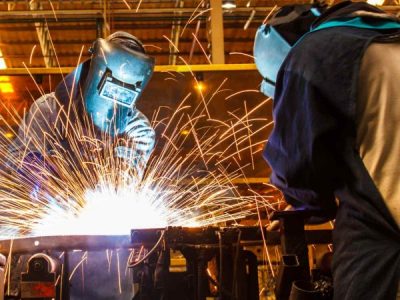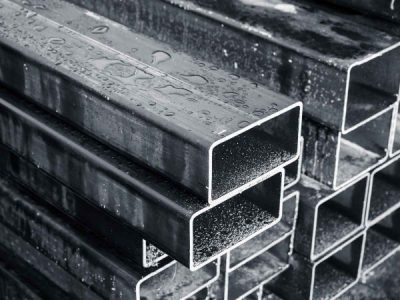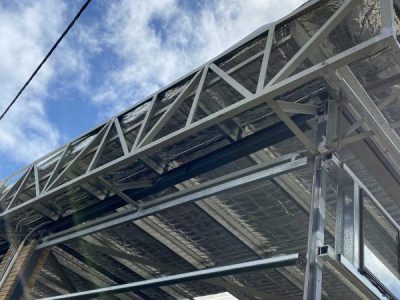The history of steel is extensive, to say the least. We can trace the history of steel back to the emergence of iron. Findings show that this material, which is the main component of steel, was used as early as 4000 BC. With iron proving itself to be more durable than bronze, which was the previously preferred metal, iron eventually eclipsed bronze as the preferred metal for manufacturing tools and weaponry. Today, we’re diving into the history of steel, and how the origins of steel have influenced steel fabrication today.
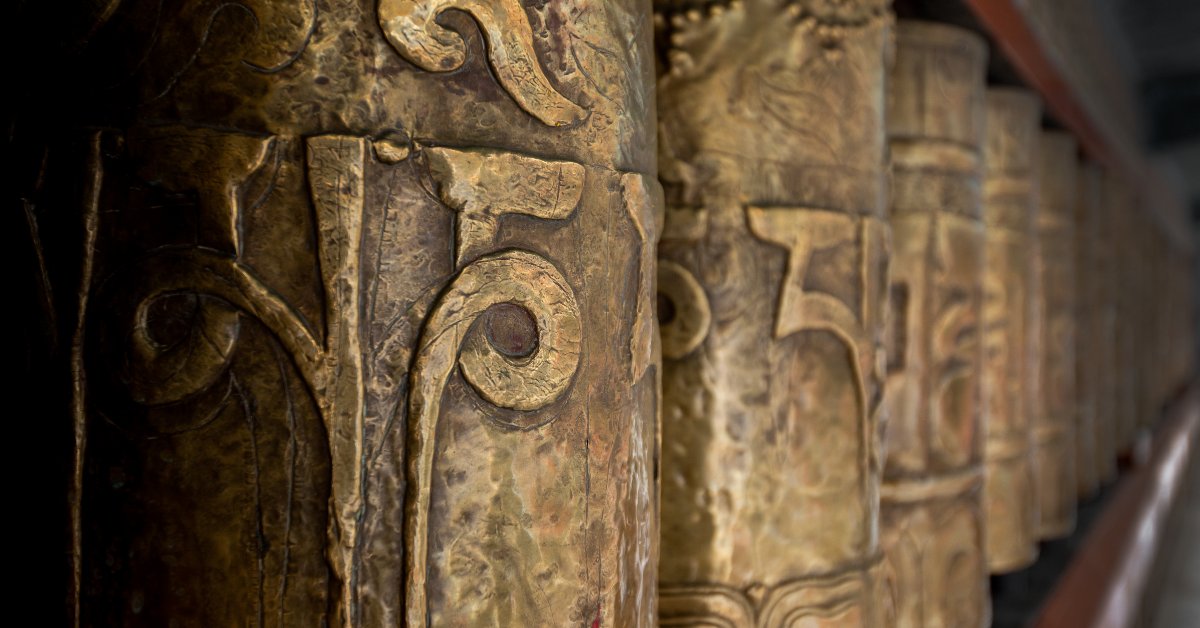
Meteoritic Iron
The oldest steel type in existence is meteoritic iron. As early as 4000 BC, meteoritic iron was used in Ancient Egypt for ornaments and spear tips. Back in 5000 BC, Iran used meteoritic iron to create beads. Given this iron was extracted from iron-nickel alloys sourced from a small number of meteorites, the use of this iron was rare and generally only used for ceremonies or special occasions.
The Age Of Iron
Iron’s superior hardness was particularly prudent for the manufacturing of tools and weapons, so it’s no surprise that this metal replaced bronze. When iron climbs to high temperatures, it starts to absorb carbon. This brings the melting point of iron down, resulting in cast iron. The production of cast iron was encouraged by the development of blast furnaces. These were initially used by the Chinese throughout the 6th century BC and were more commonly used in Europe throughout the Middle Ages. Due to the high carbon content of cast iron, this type of steel is brittle, which means it is not ideal for manipulating and shaping. Observing this problem, it was realised that new innovations were required to reduce the carbon content and brittleness of iron.
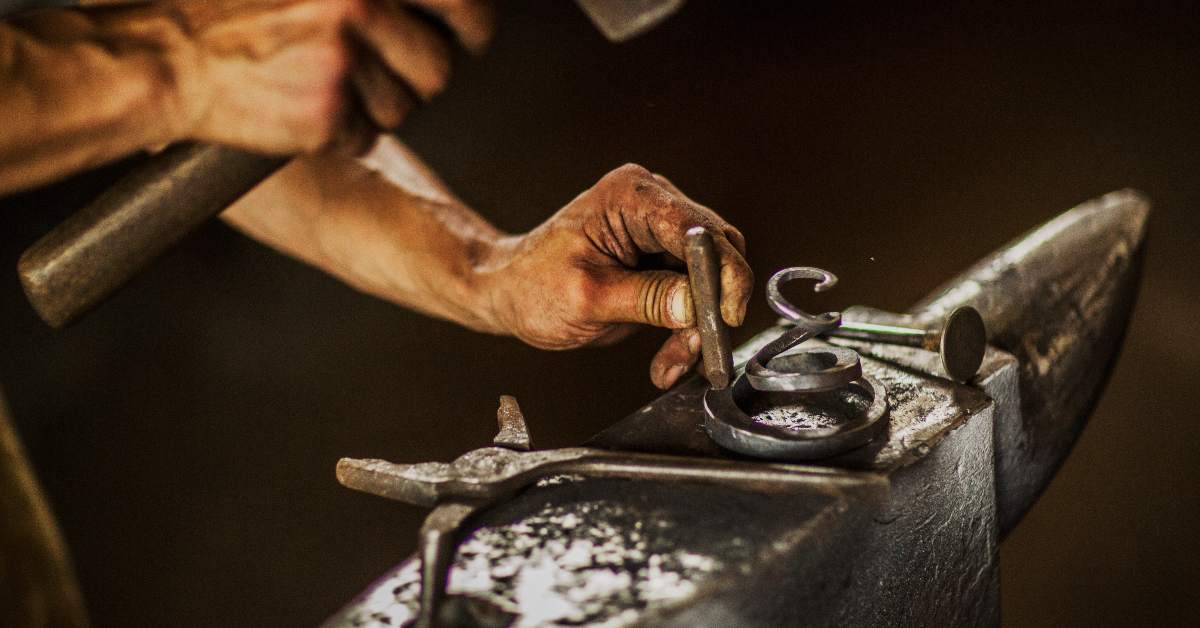
Low-Carbon Content Wrought Iron
During the late 18th century, ironmakers discovered they could transform pig iron into a low carbon content wrought iron by using puddling furnaces. Puddlers stirred hot molten iron with oar shaped tools, which introduced oxygen and removed carbon from the steel.
With the decrease in carbon, the melting point of iron increased. As a result, masses of iron agglomerated in the furnace. Once these masses were removed from the furnace, they were rolled into sheets or rails. Over 3000 puddling furnaces were operating in Britain by 1860, however the process was hindered by its heavy reliance on fuel and labour.
Blister Steel Production
Blister steel production emerged from Germany and England during the 17th century. This type of steel was created by increasing the carbon content in molten pig iron. This process was referred to as cementation.
The high production costs of both blister steel and cast steel meant these types of steel production were only applied for specialty applications. Across most of the 19th century, cast iron manufactured in puddling furnaces remained the primary structural metal in Britain.

Modern Steelmaking & The Bessemer Process
Steelmaking underwent substantial development in the 19th century. Steel became a more economical, versatile option. Developments in steel saw a wider range of steel types and alloy steels emerge.
The ever-increasing railroad expansion of the 19th century called for monumental amounts of steel and iron. Henry Bessemer’s breakthrough ‘Bessemer Process’, introduced in 1856, brought on an era of modern steel making. Bessemer developed an economical way to reduce the carbon content of steel by using oxygen. This method was revolutionary in the mass production of steel at low costs.
Pig iron, which has a high carbon content (up to 4.5%) and contains other products like manganese, was the raw material relied upon for the Bessemer Process. This process has impurities blown through the molten iron by oxidation. The impurities escape from the material either as a solid after-product or as a gas. These ‘impure’ products can serve as strengthening alloys; however, too many of these impurities result in brittleness and can develop rust.
The Bessemer Process results in a mild, ductile steel, with a low carbon content ranging between 0.5% – 0.25%. Although, mild steel comes with a lower tensile strength compared to higher carbon steel.
Steel Making In 2021
After the adoption of the Bessemer Process, steelmaking has advanced significantly. Most steelmaking (about 66%), is produced in basic oxygen facilities. In the 1960s, the development of a steel production that separated oxygen from nitrogen on an industrial scale facilitated impressive advances in the development of basic oxygen furnaces. This process is referred to as Oxygen Steelmaking.

E M Steel Are Your Local Steel Experts
Today, a diverse range of methods can be used to harden steel and there are a number of elements that can be used to do so. At E M Steel, we are a full service structural steel provider. We specialise in steel fabrication and steel sales and have provided solutions for a wide range of clients across the Greater Brisbane region. Be sure to contact our helpful team if you have any questions about our services.

